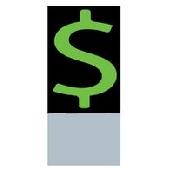
 |
|
| Financial Terms | |
| Lower of cost or market |
|
Information about financial, finance, business, accounting, payroll, inventory, investment, money, inventory control, stock trading, financial advisor, tax advisor, credit.
Main Page: finance, financial advisor, accounting, stock trading, tax advisor, payroll, inventory control, investment, |
Definition of Lower of cost or market
Lower of cost or marketAn accounting valuation rule that is used to reduce the
Related Terms:DLOM (discount for lack of marketability)an amount or percentage deducted from an equity interest to reflect lack of marketability. QMDM (quantitative marketability discount model)model for calculating DLOM for minority interests r the discount rate Accelerated cost recovery system (ACRS)Schedule of depreciation rates allowed for tax purposes. Agency cost viewThe argument that specifies that the various agency costs create a complex environment in Agency costsThe incremental costs of having an agent make decisions for a principal. All-in costTotal costs, explicit and implicit. Auction marketsmarkets in which the prevailing price is determined through the free interaction of  Average cost of capitalA firm's required payout to the bondholders and to the stockholders expressed as a Bankruptcy cost viewThe argument that expected indirect and direct bankruptcy costs offset the other Bear marketAny market in which prices are in a declining trend. Black marketAn illegal market. Brokered marketA market where an intermediary offers search services to buyers and sellers. Bull marketAny market in which prices are in an upward trend. Bulldog marketThe foreign market in the United Kingdom. Capital marketThe market for trading long-term debt instruments (those that mature in more than one year). Capital market efficiencyReflects the relative amount of wealth wasted in making transactions. An efficient  Capital market imperfections viewThe view that issuing debt is generally valuable but that the firm's Capital market line (CML)The line defined by every combination of the risk-free asset and the market portfolio. Carring costscosts that increase with increases in the level of investment in current assets. Cash marketsAlso called spot markets, these are markets that involve the immediate delivery of a security Common marketAn agreement between two or more countries that permits the free movement of capital Common stock marketThe market for trading equities, not including preferred stock. Complete capital marketA market in which there is a distinct marketable security for each and every Corner A MarketTo purchase enough of the available supply of a commodity or stock in order to Cost company arrangementArrangement whereby the shareholders of a project receive output free of Cost of capitalThe required return for a capital budgeting project. Cost of carryRelated: Net financing cost Cost of fundsInterest rate associated with borrowing money. Cost of lease financingA lease's internal rate of return. Cost of limited partner capitalThe discount rate that equates the after-tax inflows with outflows for capital Cost-benefit ratioThe net present value of an investment divided by the investment's initial cost. Also called Dealer marketA market where traders specializing in particular commodities buy and sell assets for their Debt marketThe market for trading debt instruments. Derivative marketsmarkets for derivative instruments. Direct search marketBuyers and sellers seek each other directly and transact directly. Domestic marketPart of a nation's internal market representing the mechanisms for issuing and trading Efficient capital marketA market in which new information is very quickly reflected accurately in share Efficient Market HypothesisIn general the hypothesis states that all relevant information is fully and Either-way marketIn the interbank Eurodollar deposit market, an either-way market is one in which the bid Emerging marketsThe financial markets of developing economies. Equilibrium market price of riskThe slope of the capital market line (CML). Since the CML represents the Equity marketRelated:Stock market Equivalent annual costThe equivalent cost per year of owning an asset over its entire life. Eurocurrency marketThe money market for borrowing and lending currencies that are held in the form of Excess return on the market portfolioThe difference between the return on the market portfolio and the Execution costsThe difference between the execution price of a security and the price that would have External marketAlso referred to as the international market, the offshore market, or, more popularly, the Fair market priceAmount at which an asset would change hands between two parties, both having Federal funds marketThe market where banks can borrow or lend reserves, allowing banks temporarily Financial distress costsLegal and administrative costs of liquidation or reorganization. Also includes Financial marketAn organized institutional structure or mechanism for creating and exchanging financial assets. Fixed costA cost that is fixed in total for a given period of time and for given production levels. Fixed-income marketThe market for trading bonds and preferred stock. Flower bondGovernment bonds that are acceptable at par in payment of federal estate taxes when owned by Foreign banking marketThat portion of domestic bank loans supplied to foreigners for use abroad. Foreign bond marketThat portion of the domestic bond market that represents issues floated by foreign Foreign equity marketThat portion of the domestic equity market that represents issues floated by foreign companies. Foreign marketPart of a nation's internal market, representing the mechanisms for issuing and trading Foreign market betaA measure of foreign market risk that is derived from the capital asset pricing model. Forward marketA market in which participants agree to trade some commodity, security, or foreign Fourth marketDirect trading in exchange-listed securities between investors without the use of a broker. Friction costscosts, both implied and direct, associated with a transaction. Such costs include time, effort, Futures marketA market in which contracts for future delivery of a commodity or a security are bought or sold. Gray marketPurchases and sales of eurobonds that occur before the issue price is finally set. Incremental costs and benefitscosts and benefits that would occur if a particular course of action were Index and Option Market (IOM)A division of the CME established in 1982 for trading stock index Information costsTransaction costs that include the assessment of the investment merits of a financial asset. Intermarket sectorspread The spread between the interest rate offered in two sectors of the bond market for Intermarket spread swapsAn exchange of one bond for another based on the manager's projection of a Internal marketThe mechanisms for issuing and trading securities within a nation, including its domestic Internally efficient marketOperationally efficient market. International marketRelated: See external market. International Monetary Market (IMM)A division of the CME established in 1972 for trading financial Intramarket sector spreadThe spread between two issues of the same maturity within a market sector. For Inverted marketA futures market in which the nearer months are selling at price premiums to the more Locked marketA market is locked if the bid = ask price. This can occur, for example, if the market is Make a marketA dealer is said to make a market when he quotes bid and offered prices at which he stands Mark-to-marketThe process whereby the book value or collateral value of a security is adjusted to reflect Marked-to-marketAn arrangement whereby the profits or losses on a futures contract are settled each day. Market capitalizationThe total dollar value of all outstanding shares. Computed as shares times current Market capitalization rateExpected return on a security. The market-consensus estimate of the appropriate Market clearingTotal demand for loans by borrowers equals total supply of loans from lenders. The market, Market conversion priceAlso called conversion parity price, the price that an investor effectively pays for Market cycleThe period between the 2 latest highs or lows of the S&P 500, showing net performance of a Market impact costsAlso called price impact costs, the result of a bid/ask spread and a dealer's price concession. Market modelThis relationship is sometimes called the single-index model. The market model says that the Market orderThis is an order to immediately buy or sell a security at the current trading price. Market overhangThe theory that in certain situations, institutions wish to sell their shares but postpone the Market portfolioA portfolio consisting of all assets available to investors, with each asset held -in Market price of riskA measure of the extra return, or risk premium, that investors demand to bear risk. The Market pricesThe amount of money that a willing buyer pays to acquire something from a willing seller, Market returnThe return on the market portfolio. Market riskRisk that cannot be diversified away. Related: systematic risk Market sectorsThe classifications of bonds by issuer characteristics, such as state government, corporate, or utility. Market segmentation theory or preferred habitat theoryA biased expectations theory that asserts that the Market timerA money manager who assumes he or she can forecast when the stock market will go up and down. Market timingAsset allocation in which the investment in the market is increased if one forecasts that the Market timing costscosts that arise from price movement of the stock during the time of the transaction Market value1) The price at which a security is trading and could presumably be purchased or sold. Related to : financial, finance, business, accounting, payroll, inventory, investment, money, inventory control, stock trading, financial advisor, tax advisor, credit. |